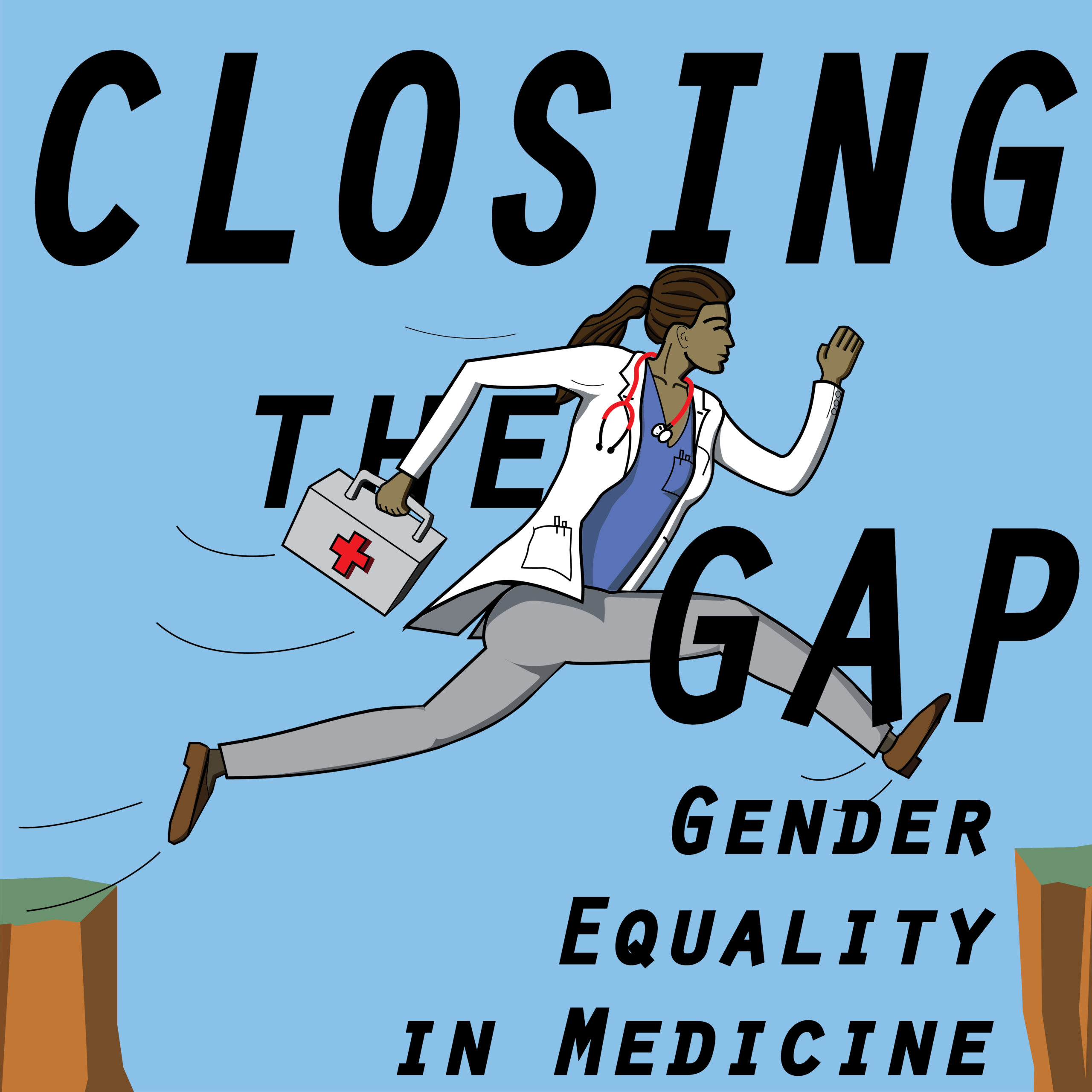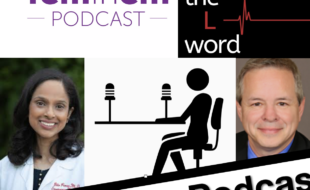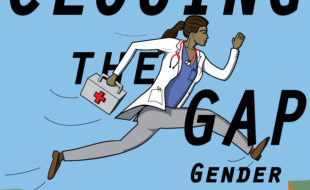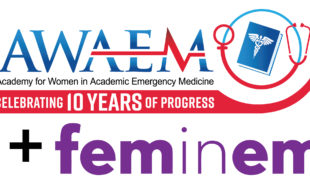Disclaimer: The view(s) expressed herein are those of the author(s) and do not reflect the official policy or position of Brooke Army Medical Center, the Department of the Air Force, the Department of Defense or its components.
Goals:
- Debunk myths about why there is a gender gap
- Summarize the data and deficits
- Point out why we care
Show guests:
Myth-busters
- Is the gender gap due to fewer numbers of women in medicine?
- 2017 data — >50% incoming and matriculating medical students are women1
- It has been close to 50% for the past 25 years
- Is the gender gap in EM due to fewer numbers of women in EM?
- 38% of EM residents are female
- Parity is not solved by having enough women at the table — in specialties with majority women (critical mass of women), salary and promotion gaps still present for women2
- Women are not interested in promotion because other priorities e.g. families
- Benevolent Sexism- assuming others’ priorities based on gender even if well intentioned3
- Data shows women and men have equal interest in career progression4
- Offensive to men to assume families are not a priority
- Women are not as talented as men in medicine
- Patient centered outcomes in studies of care provided by male physicians vs female physicians show similar outcomes, women physician may improve outcomes
- Diversity improves outcomes
What perpetuates the gap?
- Implicit and explicit bias impact the gap in every aspect of a female physician’s career5
- Compound inequities6
- Measurable things to explain salary and promotion gap7,8
- Remove confounders, bias remains
- However, biases are inherent to these contributing factors
- Eg. more men in leadership positions so higher salary gap, but why do men have all the leadership positions?
- Men and women are biased against women in the workplace, not just men
Deficits Summarized
- Salary
- Multiple studies with same conclusion
- A variety of data showing same outcomes—similar estimate of effect of pay gap9
- Gender differences in physician salary across US medical schools5,10
- n=10,000 at 24 academic institutions
- Salaries are publicly available, removing reporter bias
- Merged clinical and academic productivity
- Proper controls in place
- Even with controls, $20,000 unexplained gap in salary: seen here
- Community shows same results with different measures in place (RVU and Press Gainey Scores)
- Doximity: compensation report11 — Gap of $100,000 across full-time male and female physicians
- Controlled for hours worked, specialty, location, and years in practice
- The gap is increasing, not decreasing, despite number of women in medicine increasing. Even in specialties dominate by women — OB (80% women), pediatrics, Family Medicine – gap still not closed2
- Conclusion: head count does not matter
- Does EM have a wage gap?
- Academic Emergency Medicine: replicates data for EM12
- Salary gap $19,000-20,000
- Data from administrative report (eliminates reporting bias)
- What about graduating residents – is there a pay gap coming out of residency?
- NY state: $17,000 gap and growing despite increasing numbers of women in medical school13
- Academic Emergency Medicine: replicates data for EM12
- Promotion for Women in Academics
- PIPELINE Problem
- Drop off point: assistant professor to associate professor2
- Problem: Process of promotion is biased14.. Bias seen in evaluation of residents, evaluation of faculty, publications, first authorship, editorial position
- PIPELINE Problem
- Sexual Harassment in Medicine16
- Consensus report STEM
- Lack of equity and promotion propagates power dynamic that facilitates sexual harassment. Having women in leadership positions is found to be protective against harassment17
- Currently, the philosophy of medicine seems to be reactive not proactive
- Goal is to avoid litigation
- Secondary prevention at best
- No high aims like surveillance or primary prevention
- Solution: build a culture to prevent harassment not just deal with it once it comes up.
- The fields of science, engineering and medicine are the worst at allowing sexual harassment to occur – occurs at very high rates
- 50% of female medical students exposed to harassment prior to graduation of medical school
- As doctors we should be the best because it is part of our job!
- Negative effects bleed out to provider, patient, and organization6
- Deleterious working environment17
- Consensus report STEM
References
- Glicksman E. A First: Women Outnumber Men in 2017 Entering Medical School Class. https://news.aamc.org/medical-education/article/first-women-outnumber-men-2017-entering-medical-s/. Accessed January 28, 2019.
- Lautenberger DM, Dandar VM, Raezer CL, et al. The State of Women in Academic Medicine.; 2014. www.aamc.org/91514/reproductions.html. Accessed January 28, 2019.
- Glick P. Benevolent Sexism. In: Encyclopedia of Social Psychology. 2455 Teller Road, Thousand Oaks California 91320 United States : SAGE Publications, Inc. doi:10.4135/9781412956253.n64
- Taylor KS, Lambert TW, Goldacre MJ. Career progression and destinations, comparing men and women in the NHS: postal questionnaire surveys. BMJ. 2009;338:b1735. doi:10.1136/bmj.b1735
- Jena AB, Khullar D, Ho O, Olenski AR, Blumenthal DM. Sex Differences in Academic Rank in US Medical Schools in 2014. JAMA. 2015;314(11):1149. doi:10.1001/jama.2015.10680
- Parker RB, Stack SJ, Schneider SM, et al. Why Diversity and Inclusion Are Critical to the American College of Emergency Physicians’ Future Success. Ann Emerg Med. 2017;69(6):714-717. doi:10.1016/j.annemergmed.2016.11.030
- Class of 2014, By The Numbers. https://features.thecrimson.com/2014/senior-survey/. Accessed January 28, 2019.
- Pay Equity & Discrimination | Institute for Women’s Policy Research. https://iwpr.org/issue/employment-education-economic-change/pay-equity-discrimination/. Accessed January 28, 2019.
- Rochon PA, Davidoff F, Levinson W. Women in Academic Medicine Leadership. Acad Med. 2016;91(8):1053-1056. doi:10.1097/ACM.0000000000001281
- Jena AB, Olenski AR, Blumenthal DM. Sex Differences in Physician Salary in US Public Medical Schools. JAMA Intern Med. 2016;176(9):1294. doi:10.1001/jamainternmed.2016.3284
- Doximity. Second Annual Physician Compensation Report. https://www.doximity.com/careers/compensation_report?_csrf_attempted=yes&_remember_me_attempted=yes. Accessed January 28, 2019.
- Madsen TE, Linden JA, Rounds K, et al. Current Status of Gender and Racial/Ethnic Disparities Among Academic Emergency Medicine Physicians. Choo EK, ed. Acad Emerg Med. 2017;24(10):1182-1192. doi:10.1111/acem.13269
- CHWS. Background Highlights Gender Pay Gaps Widen for Newly Trained Physicians.; 2018. www.chwsny.org. Accessed January 28, 2019.
- Travis EL, Doty L, Helitzer DL. Sponsorship. Acad Med. 2013;88(10):1414-1417. doi:10.1097/ACM.0b013e3182a35456
- Buddeberg-Fischer B, Stamm M, Buddeberg C, et al. The impact of gender and parenthood on physicians’ careers–professional and personal situation seven years after graduation. BMC Health Serv Res. 2010;10:40. doi:10.1186/1472-6963-10-40
- National Academies of Sciences E and M. Sexual Harassment of Women. (Johnson PA, Widnall SE, Benya FF, eds.). Washington, D.C.: National Academies Press; 2018. doi:10.17226/24994
- Travis EL. Academic Medicine Needs More Women Leaders. https://news.aamc.org/diversity/article/academic-medicine-needs-more-women-leaders/. Accessed January 28, 2019.
Podcast: Play in new window | Download











